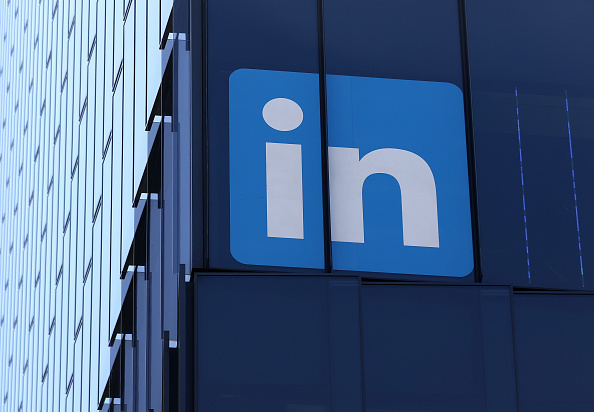Data shows that the first position in Google SERPs yields a 30 per cent click through rate, while that number drops down to under 2 per cent by the tenth position.
Learning how to structure an SEO-optimised page is critical to thriving online. We’re breaking down what you should know for optimal search engine optimisation.
Meta tags
Meta tags are one of on-page SEO’s two main components. Collectively, they deal with HTML code and relay Google information about your website’s content.
Each tag type deals with specific content and transmits unique information. They are as follows:
Title tags
Title tags are the clickable links in a Google search. They can vary from your website’s name to blog article titles, depending on the webpage in question.
Google uses title tags to match your actual content with how you’re ‘advertising’ your website. If your website is about ‘pants’ but your title tag is ‘red shirts’ Google will ding your search rank.
Similarly, titles are also used to deduce if your blog content is relevant to your website. Your ‘red shirts’ title tag will hurt SEO if paired with a blog post about cooking.
Always title your content something relevant to your website’s niche. Walmart will default to ‘Walmart’ for its main page, but use keyword based titles for other pages. You should emulate this.
Build your site by focusing on title tags that match your content headings. Wrap your content headlines in both <title> tags and <H1> tags. This ensures your content titles appear on your website and in Google search results.
Description tag
Description tags relay Google pertinent information about your website’s content, but also relay that same information to Google’s user.
Sometimes called a ‘meta description’, these tags are the short description shown below title tags in a Google search.
Write descriptions relevant to your content that also inform users what to expect after they click your search result. Always include keywords here, as Google will also read these descriptions and decide if they match your on-page content.
Image tags
Every image needs a name and an alt-description. The image name is the filename, for example, picture.jpg. The alt-text is the image description commonly displayed under the image.
Include relevant keywords in both the image name, and image description, to ensure Google understands the picture relates to your written content.
Content and user engagement
The other component of on-page SEO is content. Content includes pictures, videos, text, and anything else presented to the user. User engagement is the end goal of quality content, and also incorporates a few off page elements.
Keywords
The term everyone is familiar with, keywords determine when Google returns your website.
Long-tail keywords return under specific searches, and short-tail for general inquiries. For example, ‘red shirts sold in bulk’ is a long-tail keyword, while ‘red shirts’ is a short-tail keyword.
Always include a spattering of both in your written content. Aim for a combined keyword density of 0.5 – 1 per cent of your entire word count.
Written content
Written content includes blog posts, product descriptions etc. It should include keywords, but must be well written and enjoyable to read.
Google weighs end user experience heavily in its algorithm, and demotes rank for poorly written content. Always write for the reader, not the search engine.
Multimedia
Multimedia elements fall somewhere between user engagement and content. They are a mixture of information that both Google and the user engage with.
Strong multimedia content is interactive. This influences two metrics, bounce rate and time on site, that Google uses to determine your website’s usefulness.
Google assumes that engaged users spend more time on site and have a lower bounce rate, which indicates an authoritative website.
Focus on using media elements that draw people in and hold their attention. Google rewards those with a user first mentality.
Site speed
Today’s Internet users have extremely short attention spans. In fact, 40 per cent of users will abandon a page that takes more than three second to load.
Ensure your page loads quickly or face search rank demotion. Google confirmed many years ago that site speed factors into its search algorithm.
Eliminate web intensive items like flash, large images, and messy code to decrease load times.
Mobile responsive design
Mobile is becoming the dominant platform people use to consume media. Ignoring mobile’s impact will only lead to failure.
Data shows 50 percent of people said that even if they like a business, they won’t return if the company’s website isn’t mobile friendly.
The remedy to any mobile concern lies in mobile responsive design. Responsive websites convert desktop pages into mobile pages while retaining the same URL and HTML code.
Google has publicly stated that mobile responsive websites are best for both user engagement and pandering to the search giant’s algorithm.
Linking
Linking practices are the last step in building a perfectly SEO-optimised website. The two kinds, inbound and outbound, each have different but equally important applications.
Inbound links
Inbound links are links that lead to your website. These are either earned from other webpages, or your own internal links.
For example, if Walmart links to your website that’s an inbound link. If you link to your own about me page, that’s another inbound link.
Links from authority sites like .gov, .edu, or news outlets show Google your content is high value. Links to your own pages tell Google, “pay attention, because I think this is important.”
Both inbound strategies have their place, but you should focus on earning authoritative links in the long run.
Outbound links
The effectiveness of outbound linking is a long disputed topic. Recently, that dispute is seemingly coming to a close.
Reboot Online Marketing conducted a study that proved outbound links to authoritative websites increase search rank.
It appears that by adding outbound links to authoritative sites, Google assumes you ‘know what you’re talking about’. Whether or not this reasoning is sound, strong outbound links can only help SEO.
Structuring the perfect SEO optimised page takes time and effort. There are many variables to SEO, and Google is ever evolving.
The best way to jumpstart your website’s SEO is through diligent attention to SEO techniques, and a dedication to maintaining your website.





